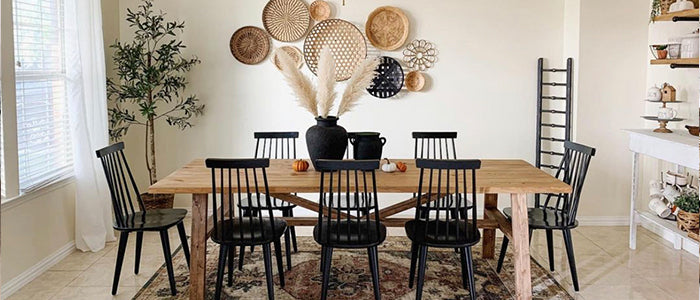
Effortless ‘Musts’ to Preserving Your Synthetic Rug
When we purchase a decorative piece for our home, it can be pretty easy to overlook the whole maintenance aspect. Rugs aren’t always cheap, and because they come into contact with the bottoms of shoes and feet, messes and spills, and even odors wafting through the air, it’s even more vital we take the necessary steps to preserve them.
What is a synthetic rug?

Synthetic rugs are often more complexly made than their natural counterparts. The fibers used to craft synthetic products are not only easier to mass produce, but they’re constantly being improved, usually making the final product less expensive than a rug made from cotton, wool, or silk.
But don’t let the word “synthetic” fool you–not only can this kind of rug look and feel fantastic, but they certainly offer superior durability and easier cleaning. Better yet, synthetics handle water spillage noticeably better than organic rugs, allowing them to resist mold build-up too.
What is the average life of a synthetic rug?

Though the exact number can vary depending on quality, materials, and maintenance, the average lifespan of a nylon, acrylic, polyester, or polypropylene rug is 5-7 years with professional cleaning. Though there are countless reasons to opt for a synthetic product, they, unfortunately, do not tend to hold up as well as natural fiber rugs and require more care for a shorter lifespan.
Why is it important to preserve it?
Investing in a natural fiber rug may not be in the cards for you right now, so going for a synthetic rug might prove to be more financially friendly. And of course, you want even the smallest purchase to be worth every single cent. If you’ve recently bought a synthetic rug as a vibrant addition to your quaint apartment, implementing these best practices will guarantee you longer use of a product that’s typically more susceptible to everyday wear and tear.
THE MUST-DOs
Vacuum often

That everyday wear and tear includes dust and dirt particles that fall onto and settle into your rug. While some synthetic rug materials fare better than others in high-trafficked areas of your home, they are all easily dirtied by anything that comes into contact with them.
At minimum, it’s wise to do a once-over with a vacuum once a week. Should the rug be placed in an incredibly high-traffic area of your home or exposed to dreaded pet hair, it should be vacuumed more thoroughly up to two to three times each week. By doing this, you cannot only expect your rug to stay in an excellent condition, but there’s also an incentive to keep your place nice and clean.
Rotate area rugs
Not every part of your rug will get equal attention. Though you may be doing everything right to preserve your area rug, forgetting to rotate it can result in an uneven look over time. Even sun fading can cause irreparable damage to your piece if not prevented by repositioning it. You can even get more use out of your reversible rugs (e.g. braids, kilims) by flipping them for even wear.
Place rug pads underneath

Hidden rug pads can actually do a ton to maintain the structural integrity of your synthetic rug while keeping it in place. With an additional barrier between the piece and the surface below it, the rug fibers are less vulnerable to wrinkling, weakening, and wearing over time.
Mend fraying rugs
If and when your synthetic rug starts to fray, don’t call it a lost cause! In fact, this kind of rug repair requires no practical experience–just a pair of scissors, fabric pen(s), painter’s tape, fabric glue spray, and a clean rug.
Once your rug is clean and ready to go, take a close look at all of the edges in need of a little TLC. Cut long threads you come across without causing damage to adjacent fibers. Take fabric pens that are similar in color to the rug edge and repeatedly press it against the frayed edge to restore its original color. Take a bit of painter’s tape and cover the areas adjacent to the repaired edge of the rug. Finally, spray a light coat of your fabric glue spray over the repaired edge. Remove the painter’s tape and allow the area to dry.
Have rugs cleaned professionally
Sadly, a vacuum can’t do it all. A professional deep cleaning every 12-18 months is an integral part to extending the life of your synthetic rug and keeping its look and smell as fresh as possible. Professionals have the equipment and capacity to thoroughly clean area rugs by the processes of dusting, washing, and drying.
And trust us, this is something you don’t want to skip if you want your rugs to last.
Preserving the lifespan of your synthetic rug doesn’t have to be laborious, just consistent. After all, taking small actions to protect it from permanent damage is a small price to pay to keep a beautiful piece around for years to come.


Leave a comment